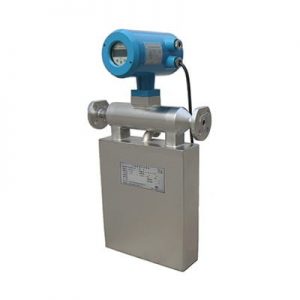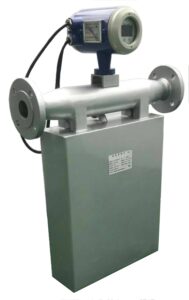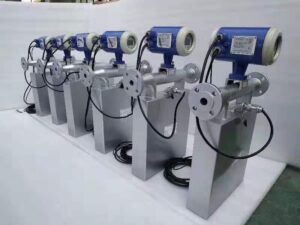As with all newly purchased meters, when the mass flow meter ordered arrives, the unpacking inspection should be carried out first. Usually, the unpacking inspection should be carried out according to the following steps:
First, visually inspect the outer packing box. Before unpacking, check the outer packing box of the flowmeter. Because abnormal phenomena may occur in long-distance transportation, if there is any serious squeezing and collision during the transport, scratches may be left on the outer packing box. At this time, special consideration should be given to whether the instrument will be damaged due to this.
Second, count the number of packages. At present, most of the packaging of mass flowmeters adopt the form of separate packaging of sensor and transmitter, and some display parts are also packaged separately from the transmitter. After opening the packing box, you should count the number of parts according to the packing list. If you buy special cables, handheld communicators, and other spare parts, you should also check them one by one. At the same time, check whether the random information is complete. Among them, the instruction manual should indicate the basic error and zero-point instability of the flowmeter and other related technical indicators, as well as related information such as component installation diagrams, electrical connection diagrams, etc. The accompanying documents should also include the factory verification datasheet, and the flowmeter obtained relevant certification documents such as the safety level certification.
Third, visual inspection. The appearance inspection mainly includes checking whether the appearance of the instrument is tidy, whether the markings are clear and correct, whether the surface coating is intact and whether the color is uniform. The sensor shall be marked with a permanent flow direction mark on the obvious part of the housing. The nameplate should indicate the name of the manufacturer or manufacturer’s standard, trademark, flowmeter name, model, nominal diameter, flow range, accuracy grade, manufacturing year and month, and factory serial number, etc. If it is an explosion-proof instrument, the explosion-proof grade should also be indicated.
In addition, when ordering, the manufacturer should be asked to show the permit for inspection of measuring instruments. The marking of the manufacturing license for measuring instruments should also be paid attention to in the visual inspection. The imported mass flow meter shall have the form approval certificate for imported measuring instruments issued by the State Bureau of Technical Supervision.
On the panel of the transmitter and the flow totalizer display instrument, the font symbols should be clear, and the display window should not have scratches, scratches, or other defects that affect the reading and appearance. The protective screen of the reading device should have good transparency.
Fourth, check the model specifications. There are many brands and models of mass flow meters. When unpacking and inspecting, you should carefully compare them based on the original data and random data. All the indicators proposed in the selection data, such as the flow rate and temperature range, pressure level, material model (such as corrosion resistance), power supply mode, output signal type, etc., should be included in the random file or nameplate clearly.
Fifth, preliminary inspection of instrument performance. In qualified units, the flowmeter should be verified immediately after opening the box. But it is often difficult to do for various reasons. At this time, some preliminary inspection measures can be taken. And during the contract claim period, contact the relevant unit to complete a technical verification.
Most Coriolis mass flowmeter sensors have several sets of detection coils and drive coils. The operating instructions generally provide the typical resistance values of these coils and the normal operating voltage range after being connected to the transmitter. First check these resistance and voltage values with a multimeter, you can preliminarily judge whether the sensor can work normally. Similarly, by referring to the instruction manual for preliminary detection of the voltage at several test points on the transmitter, it can also be preliminarily judged whether the transmitter can work normally. For Coriolis mass flowmeters that cannot be inspected by the above methods due to different vibration detection methods, self-diagnosis can be performed after the flowmeter is connected and the power is turned on. Complete the preliminary inspection according to the diagnosis code description in the manual.
In addition, there are a small number of Coriolis mass flowmeters that can neither measure the coil resistance nor have a self-diagnostic function. In this regard, some simple judgment methods can be used. For example, use two flanges with small blind plates (which can be prepared in advance according to the selection size), first block one end of the sensor, pour water into the erected sensor until it is full, and then block the other end. Connect the transmitter and power on, check its density output, it should be close to the normal value of the density of water, and observe the output instructions of the flowmeter. Place the sensor flat, open a small blind plate at one end, and let the water in the measuring tube gradually flow out, and the displayed density value should decrease. Through these simple simulation processes, it can be roughly judged whether the flowmeter can work normally.
Now some manufacturers have specially produced analog testers for the convenience of on-site maintenance. It can be used to simulate the signal sent by the special sensor to calibrate the transmitter and determine the phenomenon and cause of the failure. This method can also be used for the preliminary inspection during the unpacking acceptance. The same unpacking verification team cannot accurately determine various performance indicators like verification, but it can immediately find problems and achieve timely analysis and coordination.
For example, a user ordered a mass flow meter transmitter with a 24VDC power supply. After the delivery, the nameplate also indicated that the power supply was 24VDC. However, when the 24VDC power supply was turned on for the preliminary inspection, the transmitter did not display. After testing, the transmitter should use 220V alternating current. If a similar situation is not discovered in time, it will at least cause the loss of power cable laying and rework after installation on the production site. If 220V AC is indicated on the nameplate, but in fact, the meter can only be used with 24V DC, then it will not only cause waste at the production site but may also lead to greater danger. Therefore, unpacking inspection is essential. Especially those users who do not have the qualifications for verification should pay more attention to this link of preliminary inspection, so as to minimize the loss that the manufacturer may cause to the user in case of negligence.
In addition, if the flowmeter is not installed and put into use immediately, but needs to be temporarily stored, the recommended storage conditions should be noted, and the storage temperature, humidity, and other environmental parameters should meet the requirements.





